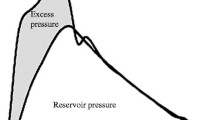Objective: to analyze the role of blood pressure (BP) in forming neuroplasticity in patients with type 2 diabetes mellitus (DM). Materials and methods. A total of 100 patients with type 2 DM were studied; patients were divided into groups depending on the presence of cognitive impairments (CI), while the control group consisted 25 subjects. All participants underwent clinical examination, a standard set of biochemical blood tests, assay of plasma osteopontin, daily blood pressure monitoring (DBPM) and brain MRI scans (dynamic contrast, arterial spin labeling, proton spectroscopy, tractography). Results. Patients with type 2 DM and CI were found to have higher body mass index, blood glycated hemoglobin, glucose, alanine aminotransferase, low-density lipoprotein, triglycerides, total cholesterol and osteopontin, along with decreased high-density lipoprotein levels (p ≤ 005). The osteopontin level was greater in patients with excess weight, hyperglycemia, dyslipidemia and patients with CI and high BP variability. Assessment of DBPM demonstrated significant differences in terms of all standard indicators, patients with DM type 2 being “non-dippers;” the presence of CI was associated with significantly higher time and area indexes for the stay in the suprathreshold BP stage and nocturnal SBP and DBP, as well as with the risk of occult hypertension. Decreased brain blood flow was seen in data on assessment of perfusion in the cortical (especially the frontal lobe) and subcortical (mainly the putamen) structures, and was associated with changes in DBPM parameters. Mean SBP and DBP in the day and night, as well as the index of BP variability, also influenced the integrity of the corticospinal, uncinate and inferior longitudinal tracts and the arcuate fasciculus. These parameters altered hippocampal metabolism in terms of choline (Cho), creatine (Cr), creatine phosphate (Cr2) and the ratios acetylaspartate (NAA)/Cho, NAA/Cr, and Cho/Cr. Conclusions. BP variability in patients with type 2 DM contributed to forming CI by a proinflammatory mechanism leading to impairments of vascularization of the brain in general and white matter structure and hippocampal metabolism.
Similar content being viewed by others
References
P. B. Gorelick, “Blood pressure and the prevention of cognitive impairment,” JAMA Neurol., 71, 1211–1213 (2014), https://doi.org/https://doi.org/10.1001/jamaneurol.2014.2014.
P. K. Elias, R. B. DAgostino, M. F. Elias and P. A. Wolf, “Blood pressure, hypertension and age as risk factors for poor cognitive performance,” Exp. Aging Res., 21, 393–417 (1995), https://doi.org/https://doi.org/10.1080/03610739508253992.
G. Kh. Sharipova, I. E. Chazova and Yu. V. Zhernakova, “Study of cognitive brain function in patients with arterial hypertension with or without metabolic syndrome,” Sistem. Gipertenz., 10, No. 3, 66–70 (2013), https://doi.org/https://doi.org/10.26442/SG28981.
P. K. Elias, M. F. Elias, M. A. Robbins and M. M. Budge, “Blood pressure related cognitive decline: does age make a difference?” Hypertension, 44, 631–636 (2004), https://doi.org/https://doi.org/10.1161/01.HYP.0000145858.07252.99.
D. I. Pavlou, S. A. Paschou, P. Anagnostis, et al., “Hypertension in patients with type 2 diabetes mellitus: Targets and management,” Maturitas, 112, 71–77 (2018), https://doi.org/https://doi.org/10.1016/j.maturitas.2018.03.013.
T. T. van Sloten, S. Sedaghat, M. R. Carnethon, et al., “Cerebral microvascular complications of type 2 diabetes: stroke, cognitive dysfunction and depression,” Lancet Diabetes Endocrinol., 8, No. 4, 325–336 (2020), https://doi.org/https://doi.org/10.1016/S2213-8587(19)30405-X.
T. Wolak, “Osteopontin – a multi-modal marker and mediator in atherosclerotic vascular disease,” Atherosclerosis, 236, No. 2, 327–337 (2014), https://doi.org/https://doi.org/10.1016/j.atherosclerosis.2014.07.004.
Y. Sun, X. S. Yin, H. Guo, et al., “Elevated osteopontin levels in mild cognitive impairment and Alzheimer’s disease,” Mediators Inflamm., 2013, 615745 (2013), https://doi.org/https://doi.org/10.1155/2013/615745.
E. van den Berg, R. P. Kloppenborg, R. P. Kessels, et al., “Type 2 diabetes mellitus, hypertension, dyslipidemia and obesity: A systematic comparison of their impact on cognition,” Biochim. Biophys. Acta, 1792, No. 5, 470–481 (2009), https://doi.org/https://doi.org/10.1016/j.bbadis.2008.09.004.
Yu. G. Samoilova, M. A. Rotkank, N. G. Zhukova, et al., “Variability of glycemia in patients with type 1 diabetes mellitus: relationship with cognitive dysfunction and magnetic resonance imaging results,” Prob. Endokrinol., 64, No. 5, 286–291 (2018), https://doi.org/https://doi.org/10.14341/probl9589.
Yu. G. Samoilova, M. A. Rotkank, N. G. Zhukova, et al., “Markers for cognitive impairments and variability of glycaemia in patients with type 1 diabetes mellitus,” Zh. Nevrol. Psikhiatr., 118, No. 4, 48–51 (2018), https://doi.org/https://doi.org/10.17116/jnevro20181184148-51.
F. Kahles, H. M. Findeisen and D. Bruemmer, “Osteopontin: A novel regulator at the cross roads of inflammation, obesity and diabetes,” Mol. Metab., 3, No. 4, 384–393 (2014), https://doi.org/https://doi.org/10.1016/j.molmet.2014.03.004.
M. A. Icer and M. Gezmen-Karadag, “The multiple functions and mechanisms of osteopontin,” Clin. Biochem., 59, 17–24 (2018), https://doi.org/https://doi.org/10.1016/j.clinbiochem.2018.07.003.
K. R. Czuriga-Kovács, D. Czuriga and L. Csiba, “Influence of hypertension, alone and in combination with other vascular risk factors on cognition,” CNS Neurol. Disord. Drug Targets, 15, No. 6, 690–698 (2016), https://doi.org/https://doi.org/10.2174/1871527315666160518122721.
Specialized Medical Care Algorithms for Diabetic Patients, M. V. Dedov et al., (eds.), Moscow (2019), 9th ed., https://doi.org/10.14341/DM221S1.
Yu. G. Samoilova, M. V. Matveeva, O. S. Tonkikh and N. Yu. Fimushkina, “Perfusion of the brain in type 1 diabetes mellitus and cognitive dysfunction,” Med. Vizualiz., 25, No. 3, 66–72 (2021), https://doi.org/https://doi.org/10.24835/1607-0763-940.
Yu. G. Samoilova, M. V. Matveeva, O. S. Tonkikh, et al., “Tractography of the brain in diabetes and cognitive disorders,” Zh. Nevrol. Psikhiatr., 120, No. 10, 33–37 (2020), https://doi.org/https://doi.org/10.17116/jnevro202012010133.
Y. C. Chen, Y. H. Li, J. Lu, et al., “Correlation between the reduction in lenticulostriate arteries caused by hypertension and changes in brain metabolism detected with MRI,” AJR Am. J. Roentgenol., 206, No. 2, 395–400 (2016), https://doi.org/https://doi.org/10.2214/AJR.15.14514.
Author information
Authors and Affiliations
Corresponding author
Additional information
Translated from Zhurnal Nevrologii i Psikhiatrii imeni S. S. Korsakova, Vol. 122, No. 3, Iss. 1, pp. 78–84, March, 2022.
Rights and permissions
Springer Nature or its licensor (e.g. a society or other partner) holds exclusive rights to this article under a publishing agreement with the author(s) or other rightsholder(s); author self-archiving of the accepted manuscript version of this article is solely governed by the terms of such publishing agreement and applicable law.
About this article
Cite this article
Matveeva, M.V., Samoilova, Y.G. & Kudlay, D.A. Blood Pressure Variability and Neuroplasticity in Patients with Type 2 Diabetes Mellitus. Neurosci Behav Physi 52, 987–993 (2022). https://doi.org/10.1007/s11055-022-01327-y
Received:
Accepted:
Published:
Issue Date:
DOI: https://doi.org/10.1007/s11055-022-01327-y




